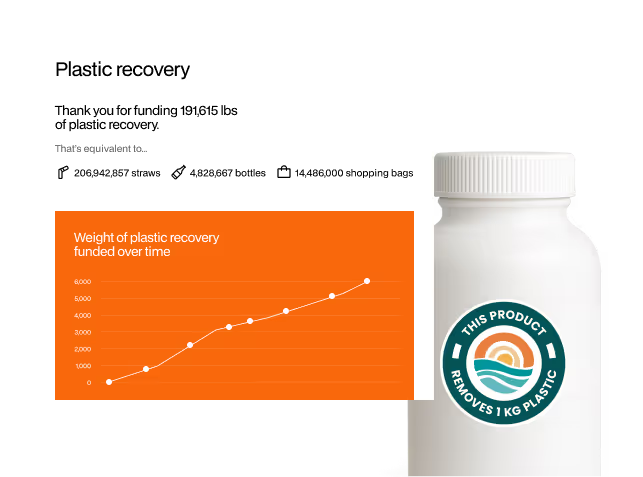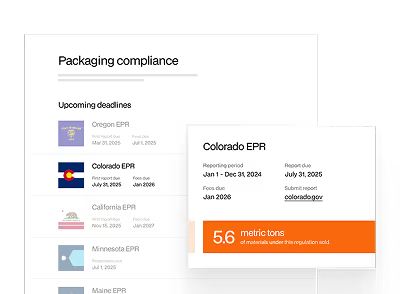How big is the plastics market in 2025, and what is the expected growth path to 2030?
The global plastics market is currently valued in the low-to-mid hundreds of billions USD, with forecasts pointing to mid-single-digit growth, though the trajectory will depend heavily on regulatory frameworks and the availability of recycled-content feedstock.
- According to Fortune Business Insights, the global plastics market was valued at USD 524.48 billion in 2024, and it is projected to reach USD 754.23 billion by 2032, reflecting a CAGR of approximately 5.1% between 2025 and 2032.
- Global plastics production is currently estimated at around 400 million metric tons annually, based on data from plastics associations and aggregated industry sources.
- Packaging remains the single largest application, accounting for more than 35% of demand worldwide, according to OECD estimates.
- Asia-Pacific continues to dominate global plastics, accounting for more than 50% of production and consumption in 2024.
Which structural drivers are pushing or dampening demand by application?
Packaging, construction, automotive, medical, and electronics remain demand centers, but each sector is being reshaped by EPR fees, recyclability requirements, and recycled-content mandates.
- Packaging demand continues to grow due to e-commerce expansion and consumer goods markets, though single-use plastics face bans and fees in the EU and multiple U.S. states.
- Automotive applications are rising, as plastics are essential for reducing the weight of electric vehicles and improving fuel efficiency, but manufacturers face pressure to design for recyclability.
- Construction demand for PVC and HDPE is accelerating in Asia and Africa due to urbanization, though regulatory restrictions in Europe are increasingly constraining additives and legacy formats.
- Medical and healthcare plastics remain critical for sterility and single-use functionality, with most jurisdictions carving out exemptions for essential devices such as syringes and IV bags.
- Electronics and appliance manufacturing continues to rely heavily on engineering plastics such as ABS and polycarbonate, as demand increases for 5G infrastructure, IoT devices, and semiconductors.
How are regulations changing the market, and what is the role of eco-modulation?
Regulation is reshaping costs and demand, with eco-modulated EPR fees and recycled-content mandates driving substitution away from non-recyclable plastics and increasing demand for high-quality PCR.
- The EU Packaging and Packaging Waste Regulation (PPWR) entered into force in February 2025 and will apply from August 2025 onward, mandating recyclability standards, reuse targets, and recycled-content requirements.
- In California, Assembly Bill 793 requires beverage containers to contain 25% recycled content by 2025 and 50% by 2030, creating a significant pull on rPET markets.
- According to ICIS, the introduction of mandates has increased the value of compliant, higher-purity recycled grades, particularly food-grade rPET, relative to virgin resin.
- Eco-modulation within EPR schemes penalizes hard-to-recycle multi-material packaging and incentivizes mono-material and PCR-rich formats, creating a direct financial signal for product teams.
Is there evidence of a recycled-content demand–supply gap, and how large is it?
Yes. The demand for post-consumer recycled (PCR) plastics is growing three times faster than supply, creating structural scarcity that exposes brands to regulatory and reputational risk.
- According to ICIS and Dow, corporate targets of 30% PCR by 2030 are unachievable under current conditions, as the global system cannot supply enough food-grade recycled content to meet demand.
- The OECD estimates that only 9% of plastic waste is currently recycled globally, which is far below the level needed to close the gap between policy mandates and brand commitments.
- This imbalance is worsened by uneven infrastructure: while some European countries exceed 30% recycling rates, many regions in Asia, Africa, and Latin America still lack even basic collection systems.
- In our article on Verified Plastic Recovery Units (VPRUs), we highlighted that end-of-life recovery is an essential investment for businesses. Without direct financing into waste collection and recycling infrastructure, especially in under-served geographies, brands will not be able to secure the PCR feedstock required to meet recycled-content mandates.
- Designing recyclable packaging is only half the solution. Companies must also invest in downstream recycling systems to ensure that the materials they put into the market can actually be collected, processed, and reused.
What happened with the UN Global Plastics Treaty negotiations, and why does it matter?
The August 2025 Geneva negotiations (INC-5.2) ended without agreement, prolonging uncertainty over whether there will be global production caps or chemical restrictions.
- The INC-5.2 negotiations in Geneva closed without consensus, with countries divided on whether the treaty should cap virgin plastic production and regulate chemicals in plastics or focus narrowly on waste management.
- Without a binding treaty, regional regulations like the EU’s PPWR and California’s recycled-content mandates remain the most important demand drivers for PCR.
- If a stronger treaty is agreed in the future, production controls would accelerate substitution away from hard-to-recycle polymers and sharply increase demand for high-quality, food-grade PCR.
Which polymers are advantaged or disadvantaged under evolving rules?
PET and HDPE are gaining structural advantages due to clear regulatory pull and established recycling streams, while polystyrene and multi-material laminates face substitution risk.
- PET is advantaged due to global beverage container mandates, as bottle-to-bottle recycling systems are scaling with clear policy support.
- HDPE and rigid PP are advantaged because they align with deposit and collection systems and can be more easily upgraded to food-grade PCR with regulatory approval.
- Polystyrene and foamed formats face substitution risk in packaging and food service under Europe’s Single-Use Plastics Directive and eco-modulated EPR fees.
- Laminated, multi-material flexible packaging will be disadvantaged until we see progress with advanced recycling and compatible collection systems are deployed at scale.
What are some strategic moves companies can prioritize between 2025 and 2027?
Companies should treat regulation as a design spec, secure PCR supply in advance, invest in packaging measurement and compliance software, and fund infrastructure to close the loop.
- Companies should align packaging specifications directly to regulatory requirements under the PPWR and U.S. EPR laws, designing for recyclability, mono-material composition, and deposit-return compatibility.
This is where rePurpose Global can help. Through our Packaging Sustainability and Compliance Platform, we provide AI-driven tools that translate packaging data into compliance reporting requirements, model future costs, and recommend design changes that can future-proof your packaging. rePurpose helps companies project EPR fees under eco-modulated schedules and to forecast exposure across markets. - Companies should finance verified end-of-life collection infrastructure, particularly in geographies with underdeveloped municipal systems, to increase available PCR feedstock while addressing leakage. Learn more about how rePurpose is helping close the loop and accelerate our transition to a fully circular economy.
What are some emerging Circular Economy trends that matter in the plastics market?
Four emerging trends - circular plastics, bioplastics, digital traceability, and advanced recycling - are reshaping industry investment and strategy.
- Circular plastics and recycling technology: Mechanical recycling continues to see more investments this year. Innovations in sorting, AI vision, and mono-material design are making recycling streams more efficient.
- Bioplastics adoption: Bioplastics currently represent less than 2% of global plastics production (European Bioplastics, 2023), but are growing at double-digit CAGR, especially in applications like packaging and disposable items.
- Digital product passports and traceability: The EU is piloting digital product passports (DPPs) under the Circular Economy Action Plan, which will require companies to disclose packaging composition, recyclability, and recovery outcomes by 2030.
- Advanced recycling (chemical recycling, pyrolysis): Chemical recycling, while historically a little controversial due to its energy intensity, is attracting billions in investments from major players like Dow, ExxonMobil, and SABIC as they seek scalable solutions for hard-to-recycle streams.
What does the 2025 plastics outlook mean for companies?
The plastics market will continue to grow, but the winners will be those that design to the regulatory rulebook, lock in scarce PCR supply, and help build the recovery systems that close the gap between commitments and reality.
The plastics industry in 2025 is not defined only by volume growth, but by the regulatory and stakeholder expectations that are redefining material economics. Virgin resin demand will persist, but brands that anticipate and design for circularity will be best placed to withstand rising costs, compliance scrutiny, and reputational risk.


.png)
.avif)
.jpg)
.jpg)






